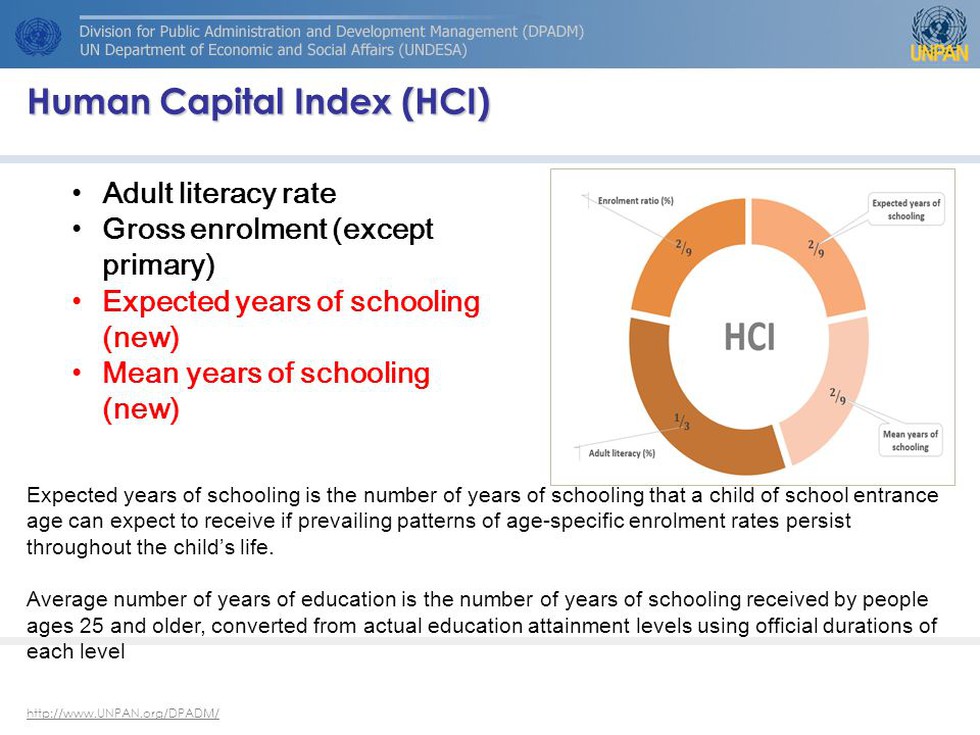Human Capital Project (HCP):
- Broader theme of the World Development Report (WDR) this year is “The Changing Nature of Work”.
- As part of this report, the World Bank has launched a Human Capital Project (HCP).
- The HCP programme is claimed to be a program of advocacy, measurement, and analytical work to raise awareness and increase demand for interventions to build human capital.
- There are three components of HCP: (i) Human Capital Index (HCI), (ii) a programme of measurement and research to inform policy action, and (iii) a programme of support for country strategies to accelerate investment in human capital.
Human Capital Index (HCI): Brief Overview
- HCI is a cross-country human capital measurement metric, that has been constructed for 157 countries.
- It measures the amount of human capital that a child born today can expect to attain by age 18.
- It conveys the productivity of the next generation of workers, compared to a benchmark of complete standard education and full health.
- The HCI measures the Index outcomes for each country as a fraction of maximum value of 1.
Three Components of HCI:
- Survival, as measured by under-5 mortality rates;
- Expected years of Quality-Adjusted School which combines information on the quantity and quality of education; and
- Health environment using two proxies of (a) adult survival rates and (b) the rate of stunting for children under age 5.
HCI vs HDI:
- Human Development Index (HDI) constructed by UNDP differs from HCI in various ways.
- HCI uses survival rates and stunting rate instead of life expectancy as measure of health.
- HCI uses quality-adjusted learning instead of merely years of schooling as measure of education.
- HCI also excludes per capita income whereas the HDI uses it.
Key findings:
- For 56% of the world’s population the HCI is at or below 0.50; and for 92% it is at or below 0.75. Hence only 8% of the population can expect to be 75% as productive as they could be.
- Advanced economies such as North America and Europe mostly have HCI value of above 0.75, while South Asia and Sub Saharan Africa have the lowest HCI among the regions.
- Singapore topped the poll as it was highly rated for its universal healthcare system, education exams results and life expectancy figures
Indian Scenario:
- Human Capital Index (HCI): The HCI for India is 0.44. i.e. a child born in India today will be only 44 % as productive when she grows up as she could be if she enjoyed complete education and full health. The HCI in India for females is marginally better than that for males.
- India is placed at the 115th position, lower than Nepal, Sri Lanka, Myanmar and Bangladesh.
- Probability of Survival to Age 5: 96 out of 100 children born in India survive to age 5.
- Expected Years of School: In India, a child who starts school at age 4 can expect to complete 10.2 years of school by her 18th birthday.
- Harmonized Test Scores: Students in India score 355 on a scale where 625 represents advanced attainment and 300 represents minimum attainment.
- Learning-adjusted Years of School: Factoring in what children actually learn, expected years of school is only 5.8 years.
- Adult Survival Rate: Across India, 83 per cent of 15-year olds will survive until age 60.
- Healthy Growth (Not Stunted Rate): 62 out of 100 children are not stunted. 38 out of 100 children are stunted, and so at risk of cognitive and physical limitations that can last a lifetime.
- Gender Differences: In India, HCI for girls is marginally higher than for boys.
